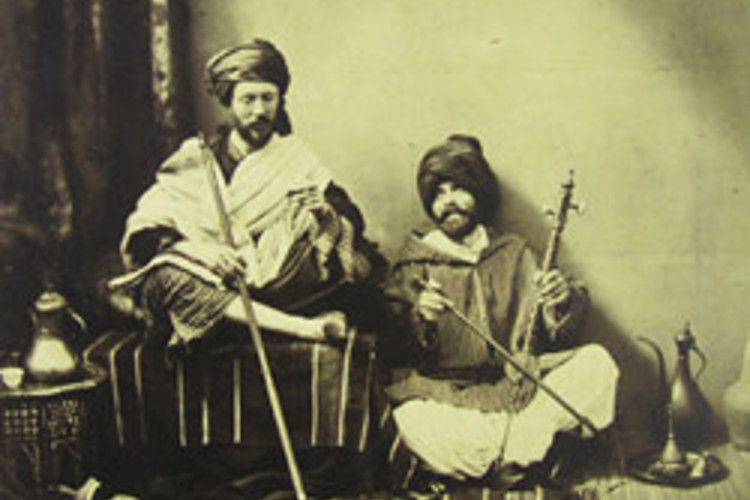
Fenton, who studied as a painter in Paris, made his name photographing the Crimea in 1855, but these albumen silver prints date from 1858 when, following the Orientalist craze, Fenton made his London studio the setting for a suite of imagined photographs of Muslim life influenced by his knowledge of artists such as Eugene Delacroix.
He used friends as models who were not always convincing in their roles.
A total of 51 photographs are known to have been printed from the collodion negatives, but fewer than 20 were ever exhibited by Fenton during 1859 and most were never published. By 1862 Fenton had sold his equipment and abandoned the profession entirely.
The majority of photographs known from this series come from Fenton's own 'grey paper' albums sold by Christie's between 1978 and 1982, of which the Getty Museum in Los Angeles holds the lion's share.
Currently, a large and striking photograph from the suite entitled Pasha And Bayadere - one of only two known measuring 161/2 x 15in (42 x 38cm) - is subject to an export ban, while the National Media Museum in Bradford attempt to raise £109,000 to buy it. One of the images sold in South Cerney was a smaller version of this picture with a slightly different composition.
Dominic Winter's photography specialist Chris Albury said: "I had no idea that these photographs were so rare when I first saw them.
"It was only when I spotted an export ban story on one of these that I realised we had a variant of the same photograph, albeit smaller and without Fenton himself in the image."
This print, measuring 101/2 x 10in (26.5 x 25cm) and inscribed O[riental?] No 13, carried the top estimate of £5000-8000 and - following a bidding between phone bidders in both the USA and mainland Europe - fetched £32,000.
The pencil writing on the mounts would seem to indicate the new discoveries came from Fenton's studio, but their life since then has been less than glamorous. The vendor, whose father had owned them at least 50 years ago, believed they had languished in a damp-stained folder in the attic since Victorian times.
By Roland Arkell




